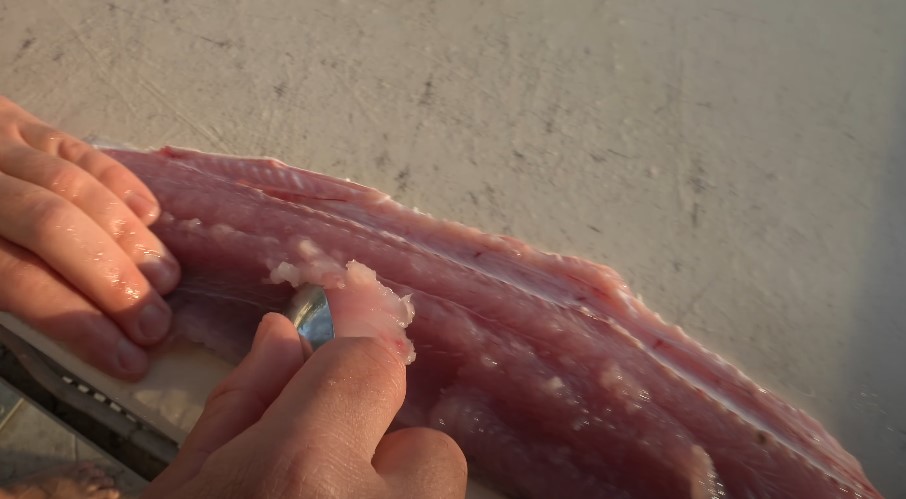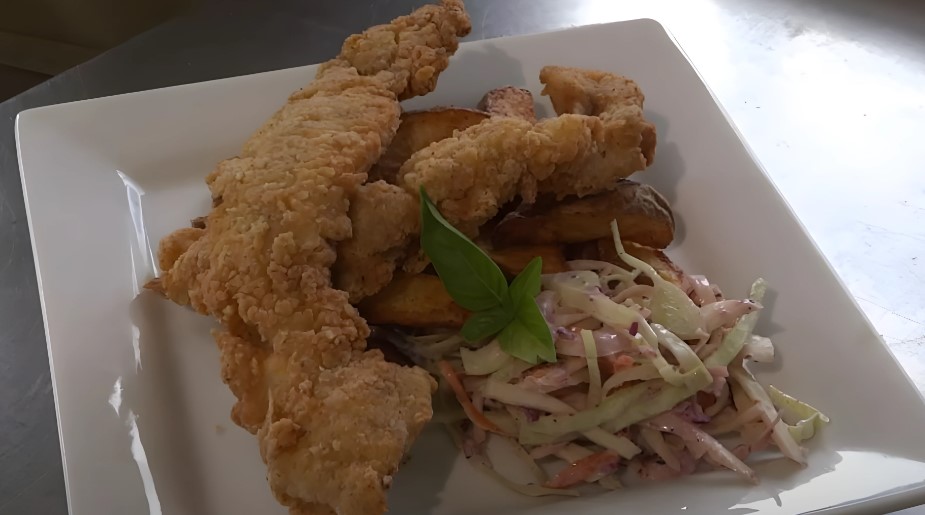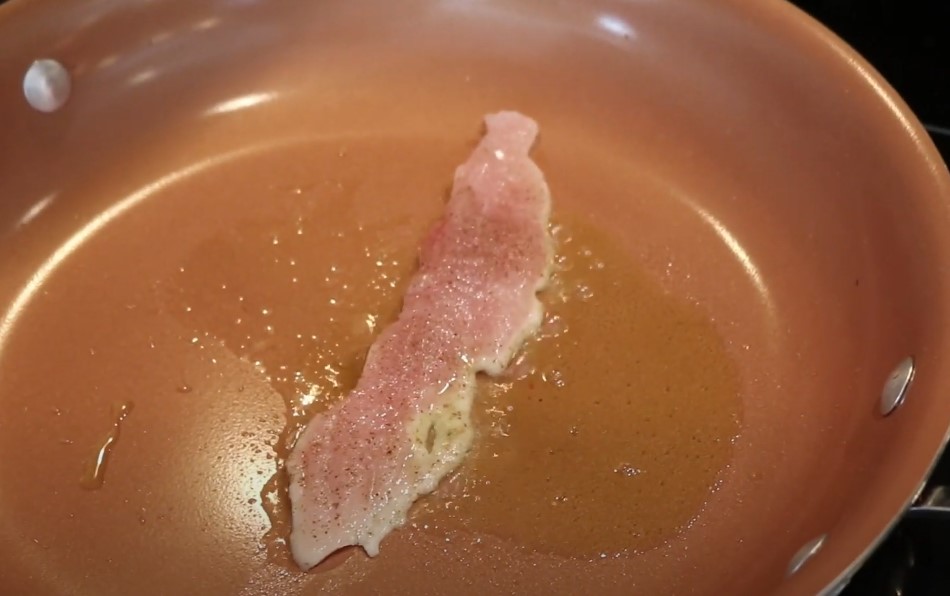Some people have heard of a certain slim, silvery fish known as the ladyfish (Elops saurus), yet many steer clear of it in the kitchen.
There’s a sense of trepidation around its bony frame, and folks often toss it into the “unwanted catch” bucket. Still, many dedicated anglers have discovered that a bit of extra care can transform this underappreciated contender into a dish worth savoring.
With that said, I prepared a guide on ways to enjoy ladyfish at the dinner table. Maybe it’s not the first species you dream about when planning dinner, yet it can be surprisingly tasty once you give it a fair shake.
Let’s get right into it.
Highlights
- Ladyfish is edible and flavorful with proper prep.
- Grinding or canning helps manage bones easily.
- Great for patties, fritters, and soups.
Is It Edible or Not?
Many might have heard rumors that ladyfish isn’t fit for the dinner table. That’s a misunderstanding rooted in the preconceived notion that dealing with all those bones is too big a chore, like bonefish. In reality, the fish is perfectly safe to eat and can be downright enjoyable.
Picture something akin to mackerel but slightly softer, which can be great once it’s smoked, canned, or whipped up in a fish cake.
One avid angler even discovered that smoking and canning ladyfish leads to a product remarkably close to smoked mackerel.
That fish then works as a great spread or salad addition, especially if combined with a punchy dressing and crunchy vegetables.
Key Preparations and Techniques

Taming the bone brigade is the main concern for cooks dealing with ladyfish. Fortunately, a few tried-and-true methods can simplify the process.
Each one aims to handle the flesh in a way that reduces the hassle of picking out zillions of tiny bones.
Spoon Scraping
Instead of standard filleting, it’s wise to scrape the meat away from the bones using a spoon. The flexible shape of a spoon allows you to work around the skeleton more methodically, pulling away the flesh without wrestling every tiny bone.
It might seem slow at first, but it becomes second nature after a few attempts.
Grinding the Flesh
Once the meat is separated, a quick spin in a grinder or food processor helps achieve a uniform texture. That step transforms the flesh into a blank canvas for patties, fritters, or any creation that needs a paste-like consistency.
By passing the fish through a grinder, those pesky bones become nearly unnoticeable, especially if they’re small and pliable.
Canning for Convenience
Folks who enjoy the mild flavor but dread every bone might opt for pressure cooking. That method softens any remaining skeletal bits, much like canned salmon or sardines.
After a thorough canning cycle, any leftover bones are barely felt. It’s then ready for salads, spreads, or hearty soups without any dreaded crunch.
A Few Mouthwatering Ideas

Grinding or canning ladyfish opens up a world of culinary options. Think about how crab cakes, salmon patties, or cod fritters are made. Ladyfish can step into that role without missing a beat.
Fish Cakes or Patties
- Grind the ladyfish flesh
- Combine with herbs, spices, a binder (egg), and breadcrumbs
- Shape into cakes
- Pan-fry or deep-fry until golden brown
That classic approach yields a crisp exterior and a juicy interior. Sprinkle a little lemon juice or top with tartar sauce. Some might say it’s reminiscent of a casual seafood burger, perfect with a side of fries.
Fish Balls in Soup
Grinding the fish and forming small balls for soups or stews is another option. A Southeast Asian-style broth, loaded with ginger, lemongrass, and a bit of chili, can complement the mild flavor beautifully. The fish balls soak up the aromatic broth, ending in a savory spoonful every time.
Crispy Fritters
Combine ladyfish paste with seasoning, maybe a dash of chili flakes and minced onion, then fry spoonfuls of the batter.
You get little golden nuggets that work as an appetizer or a quick snack. Serve with a zesty dipping sauce, and it’s an easy crowd-pleaser during a casual gathering.
A Glimpse into Cultural Takes
View this post on Instagram
Certain communities have embraced ladyfish for generations. In Vietnamese cooking, a fried ladyfish patty known as “Chả Cá Ladyfish Chiên” is highly regarded for its flavor and texture.
There, the process involves blending fish paste with fragrant ingredients like lemongrass, garlic, shallots, and kaffir lime leaves.
One bite reveals the boldness of those aromatics combined with the subtle character of the fish. When placed on a bed of rice or in a rice noodle bowl, it’s a comforting meal that speaks to coastal culinary traditions.
Practical Tips to Keep in Mind

A few extra pointers can help create a safer and more enjoyable culinary experience:
- Freshness Counts: Any fish stored on ice soon after being caught retains quality and reduces any unpleasant flavors. Ladyfish, with its softer flesh, benefits greatly from quick cooling.
- Flavor Pairings: Mild flavors often pair well with bright citrus, garlic, chili, and fresh herbs. Those additions amplify the fish’s clean taste without overpowering it.
- Avoid Fillet-Heavy Recipes: Ladyfish flesh can fall apart if treated like a sturdier species. Instead, aim for dishes where ground or mashed fish fits well.
- Consider Pressure Cooking: Anybody who dreads hidden bones might find relief in canning or pressure cooking. A little patience with that method can make bones practically vanish.
Summary
Why not give a scrappy fish its moment in the sun? With spoon-scraping, careful grinding, and bold flavor pairings, ladyfish morphs from a bony challenge to a memorable meal.
The result could be a crispy patty, a smoked spread, or a savory fish ball in a simmering soup. For those who savor the thrill of hooking a fish that fights like it means it, and then relish turning that same fish into dinner, the entire cycle feels downright satisfying.
Taking a chance on ladyfish also encourages an expanded view of the seafood spectrum. Overlooked species can spark culinary creativity and support sustainable fishing by easing the demand on overfished varieties.
With a little inventiveness and good fishing knowledge, there’s no telling how many lesser-known catches could become favorites. Ladyfish stands as a prime example: once dismissed by many, but now finding a spot on the plate through inventive preparation.

